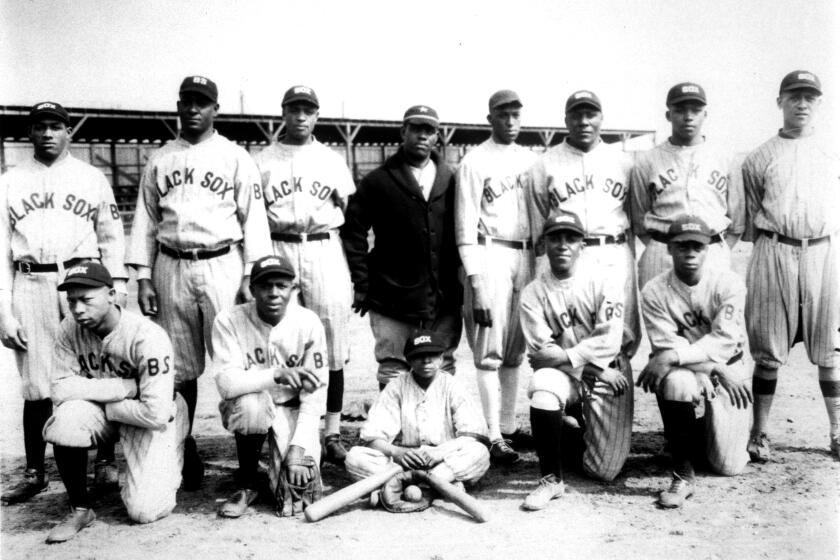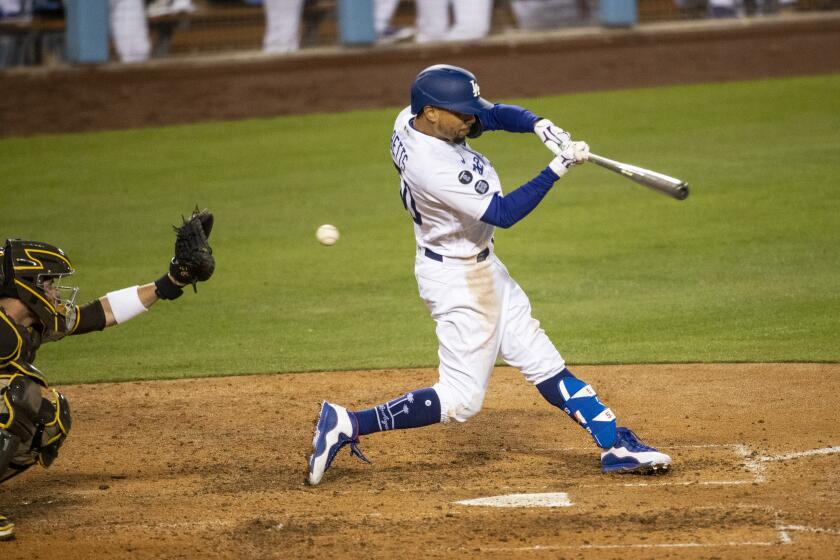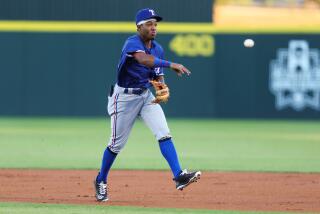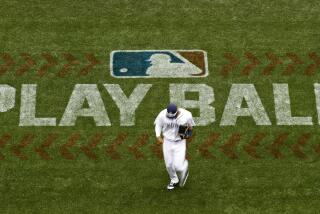Can one Black glovemaker and ‘Fear of God’ make baseball cool again?
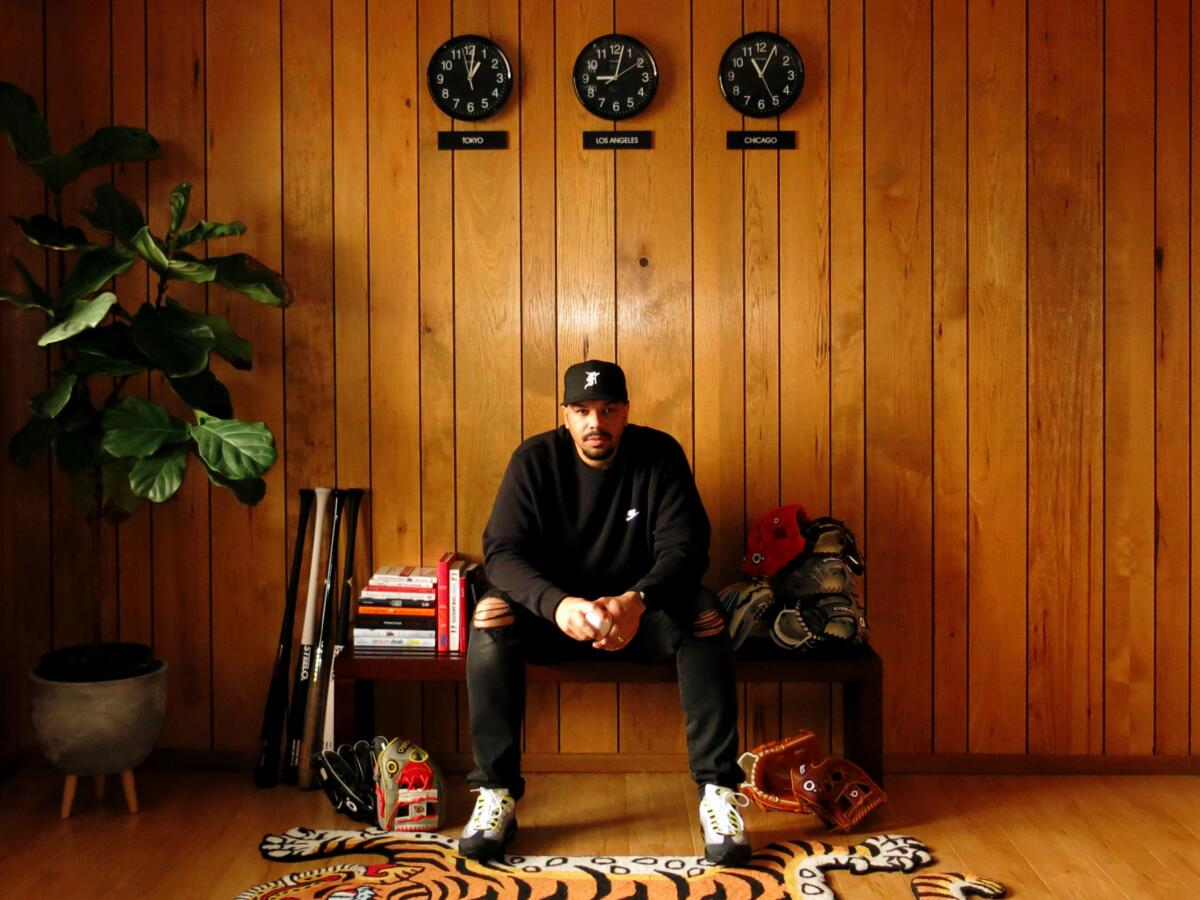
The kids crammed against the gates, squirming for an hour or more, waiting for a glimpse of their favorite players. If the kids were lucky, a player might stop on his way out of the parking lot and sign a few autographs.
Shawon Dunston emerged. In a loud instant, Steve Friend’s life found direction.
On his baseball card, Dunston was a two-time All-Star shortstop for the Chicago Cubs. On that day, at least to Friend, Dunston also was an icon of style and fashion: wearing a gold chain, with music blaring from his Mercedes.
“Seeing that version of what I would call hip-hop in baseball — that I had never seen before — blew my mind,” Friend said. “It disrupted my whole world.”
Three decades later, Friend is taking small steps to disrupt the corporate behemoths that dominate the manufacture of baseball gloves. You’ve heard of Wilson, and Mizuno, and certainly of Rawlings, which is the “official glove of Major League Baseball” in part because the league holds an ownership stake in the company.
Albert Pujols was the best player in baseball when the Angels signed him in 2011, but he couldn’t match his accomplishments from his St. Louis days.
Friend calls his one-man company Steelo Sports, the first Black-owned company to supply gloves to contemporary major league players. As MLB officials focus on reversing the decline in Black participation in baseball, Friend would like to help ensure the league does not overlook the broader picture of appealing to Black fans, and to younger fans in general.
Said Friend: “How do you make baseball transcend the sport? How do you make baseball something that’s attractive to the skateboarder? The streetwear enthusiast? The basketball player? The artist? The graphic designer?
“Right now, as a glove company, that would appear to be a very hard task, as there seems to be no correlation. But part of my mission is to help transcend the sport into a whole other side of lifestyle culture.”
The holy grail, in four words: Make baseball cool again.
Friend grew up in an era of Ozzie Smith’s backflips, Bo Jackson’s almost cartoonish feats, Rickey Henderson’s royalty, Barry Bonds’ swagger, Dunston’s flair and, of course, Ken Griffey Jr.’s backwards cap and sweet, sweet swing.
In a 2016 article in GQ — a journal of style and fashion, and not so much sports — author Jack Moore wrote: “We all wanted to be Junior. Why? Because he made baseball look fun.”
Friend played the infield, as long as he could, a Black athlete who included the No. 42 in his first email address as a tribute to Jackie Robinson. He played at the College of Charleston, on a team with current New York Yankees outfielder Brett Gardner, then one season in an independent league.
He worked a decade for other people — including e-commerce for sporting goods, fashion, and cannabis companies — before launching Steelo.
“I kept coming back to baseball,” he said. “Baseball is my passion.”
Friend has recruited a dozen players to the Steelo roster, including three with major league service time this season: Chicago Cubs pitcher Pedro Strop, Toronto Blue Jays outfielder Jonathan Davis and Houston Astros outfielder Ronnie Dawson.
The biggest name: Cincinnati Reds pitcher Hunter Greene, the second overall pick of the 2017 draft. Greene, who is starting at double A this season, graduated from Notre Dame High in Sherman Oaks.
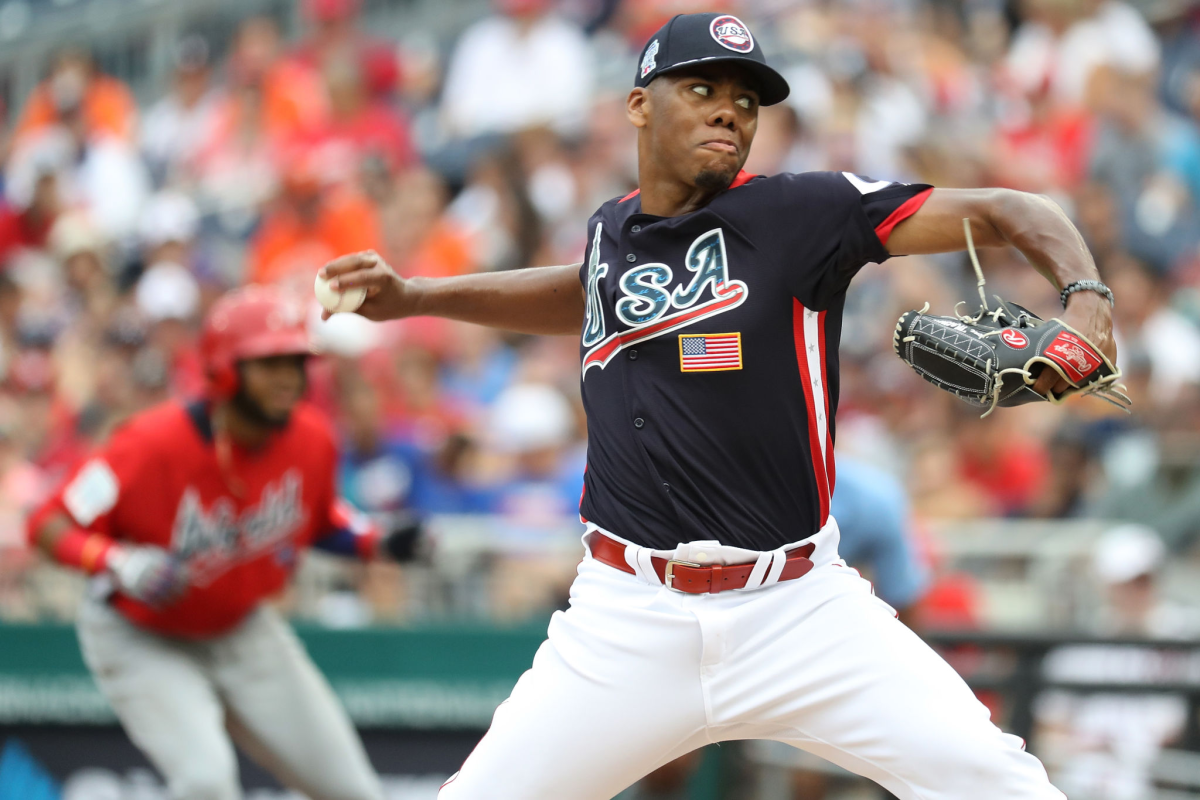
“My mother has amazing penmanship and actually taught me calligraphy when I was in middle school,” Greene said. “I’m an artist as well.”
Greene designed his own glove, down to the colors and piping, and included his signature and his personal “HG” logo. One man’s glove might not make baseball cool again, but it’s a start.
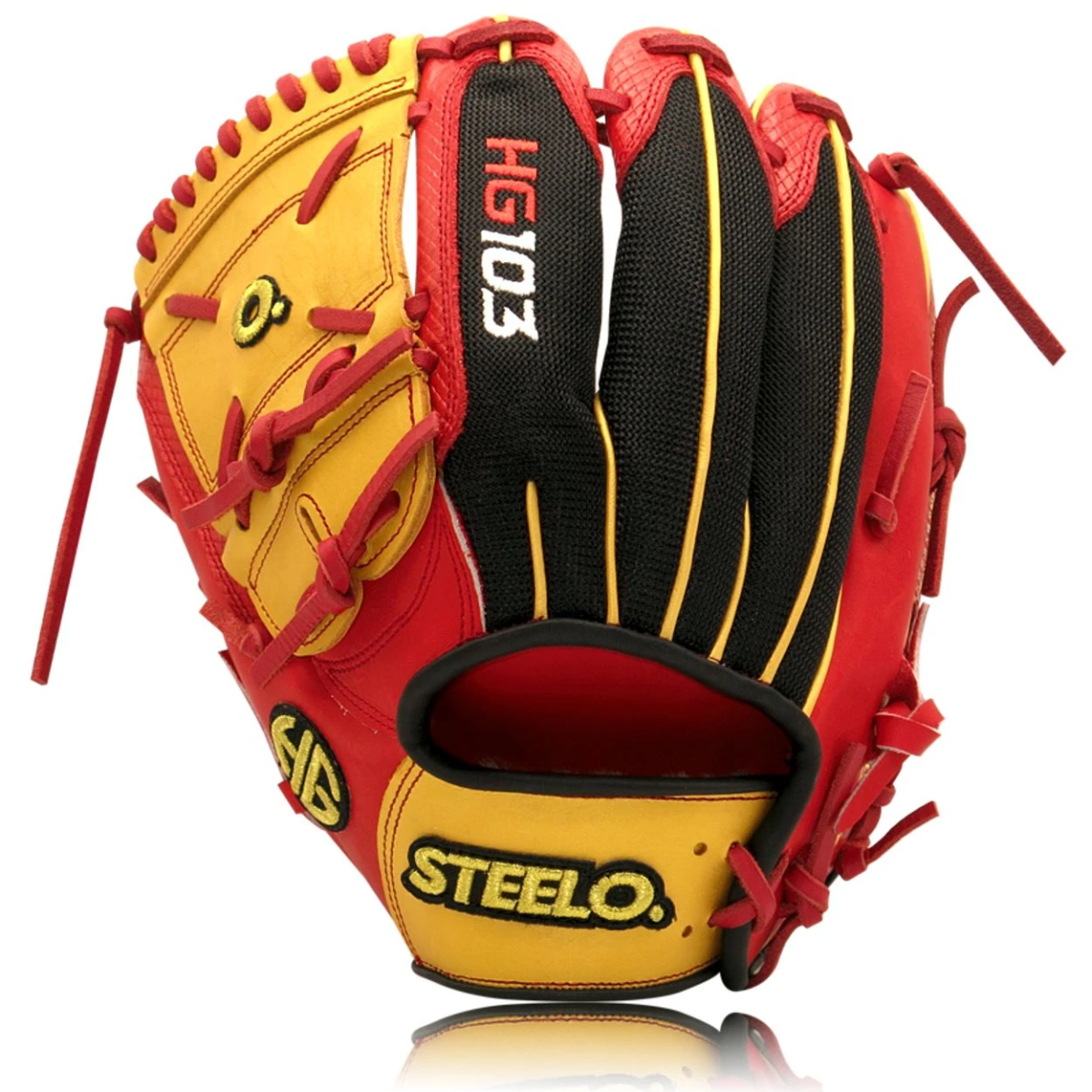
In 1990, the year Dunston made his second All-Star team, Henderson was the most valuable player in the American League, Bonds was the most valuable player in the National League, and Smith won his 11th consecutive Gold Glove.
Cecil Fielder hit 51 home runs, and Vince Coleman stole 77 bases. The top six players in OPS were Black: Henderson, Bonds, Fielder, Eddie Murray, Fred McGriff and Kal Daniels. Star power was provided by Darryl Strawberry, who hit 37 home runs, and Jackson, who hit 28. Griffey, at age 20, made the first of 13 All-Star appearances.
In 1991, the percentage of Black players on major league rosters stood at 18%, according to the Institute for Diversity and Ethics in Sport. That figure fell to 13% in 2001, 8.5% in 2011, and 7.6% in 2021.
In response, MLB has launched urban academies, development programs for top Black prospects, and youth baseball and softball programs — and not just to produce major leaguers.
Major League Baseball announces it will recognize the Negro Leagues as a major league, with their records and statistics becoming part of MLB history.
The best predictor of whether someone will grow up to be a fan, as Commissioner Rob Manfred likes to say, is whether he or she played the sport as a kid. And, in January, Manfred hired Griffey himself, as an advisor in planning strategies to lure a new generation to the sport.
Authenticity is more important to this generation than authority. When Greene talked about marketing players off the field, to present them as fashion and lifestyle icons, he did not say he wanted to work with the league. He said he wanted to work with Jerry Lorenzo, the streetwear designer behind the “Fear of God” label (and the son of former major league manager Jerry Manuel).
In an effort to reach non-traditional fans — or, for that matter, non-fans — the league has engaged in collaborations with select lifestyle brands, including Fear of God; Born X Raised; and Kith. On the field, however, it was not until the 2019 season that the league granted players freedom to wear their desired cleat design.
By letting players express themselves, and show off their personalities on and off the field, Friend said, baseball can make inroads into an audience it struggles to reach. The average age of a fan watching on television is 57 and streaming a game on mlb.tv is 44, according to the league. MLB does attract younger fans to its social media channels.
Mookie Betts and Corey Seager have slumped badly at the top of the Dodgers’ lineup, one big reason the team has lost 13 of its last 17 games.
“It’s more about how you take something that traditionally is considered baseball-only and make that aspirational, make that transcend past baseball,” Friend said. “How can I make that popular to kids waiting in line at a streetwear boutique for Jordans, or for a Kanye West apparel release? That’s the big thing that could really tie baseball more to culture.”
It is cliché by now to say that the NBA does a better job promoting its players than MLB does, but it is league culture too.
For a league that has released commercials with the slogans “Let the kids play” and “We play loud,” it’s a little incongruous to suspend Cincinnati Reds outfielder Nick Castellanos for flexing his muscles over a fallen player. It’s a bit odd to promote San Diego Padres shortstop Fernando Tatis Jr. as a face of the game while debating whether he should swing at a 3-and-0 pitch.
The NBA prospered when a generation of kids wanted to “be like Mike.” If MLB really wants this generation to be like Tatis, let the kids play loud, and dress loud too.
More to Read
Get our high school sports newsletter
Prep Rally is devoted to the SoCal high school sports experience, bringing you scores, stories and a behind-the-scenes look at what makes prep sports so popular.
You may occasionally receive promotional content from the Los Angeles Times.


